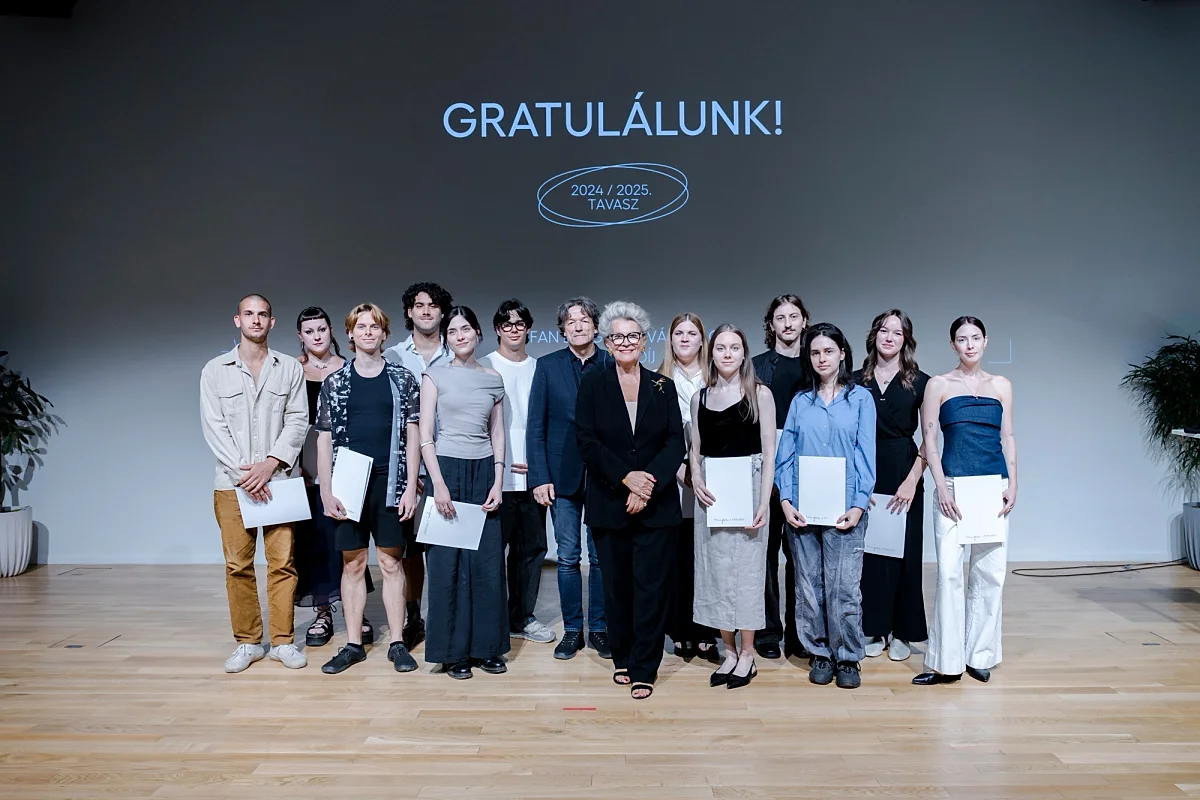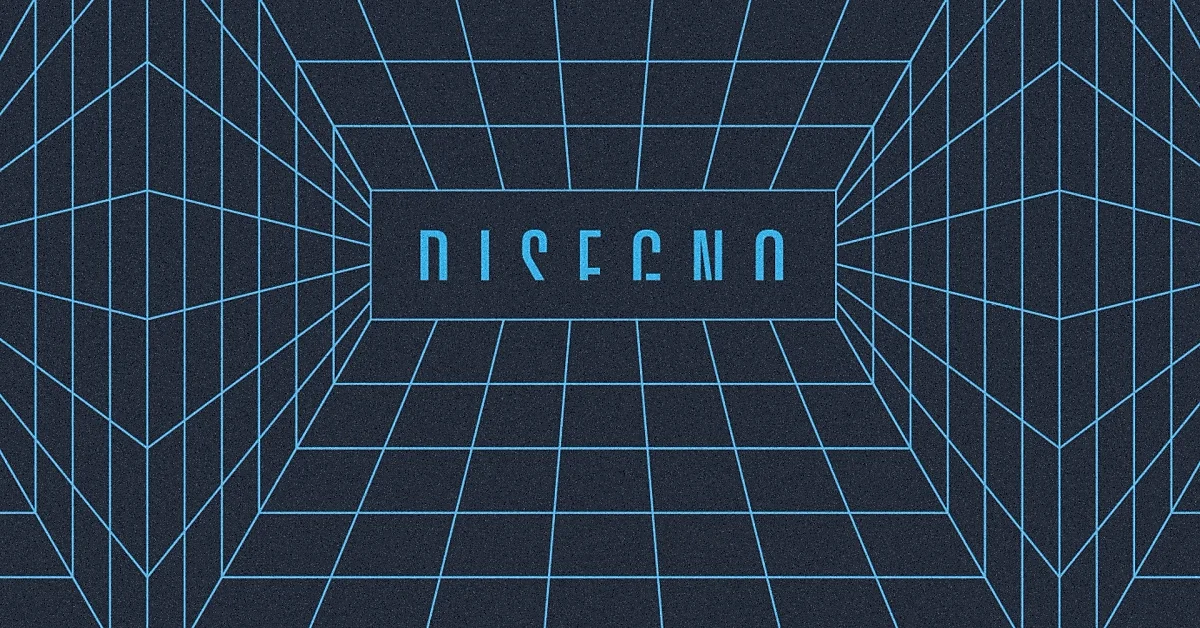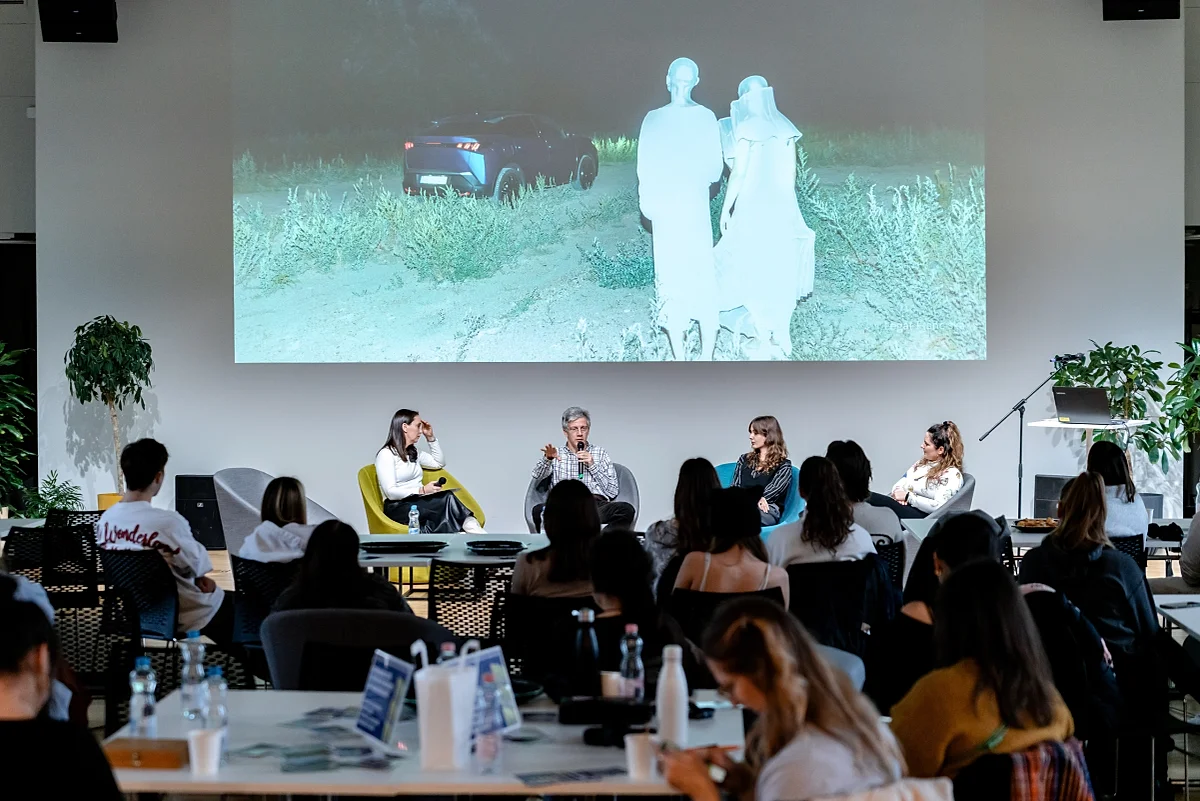
Here are the new recipients of the Stefan Lengyel Scholarship of Excellence
The scholarship was established five years ago by the Foundation for Moholy-Nagy University of Art and Design. Students submit nominations, while the final decision is made by a professional jury. This year’s award-winning projects reflect on pressing social issues, personal stories, and forgotten spaces through sustainable materials, empowering technologies, and bold narratives.
Once again, the scholarship’s namesake, designer Stefan Lengyel was involved in the selection process for the ninth edition of the awards, presented this September. Alongside MOME faculty members, the evaluation panels included partners and industry experts, ensuring that the judging process brought as many perspectives as possible into play. The panels assessed not only the designs themselves but also the thinking behind them, the quality of the presentations, and the potential economic and social dimensions of the projects.
The selected works demonstrate how design can foster community building, whether through service design or by giving voice to personal narratives.
The award-winning projects:
Ádám Balázs Ritli’s Király Street 25–27–29 project reimagined the block as a community hub including co-working spaces and social housing. By reorganising the traditional courtyard building, he created two-storey flats with roof terraces and garden access, integrating residential and communal functions to support inner-city living.
Bálint Gábor Ligeti created Playable, a modular wireless controller and customisable drawing software that gives children with limited mobility a space for creativity, blending play, therapy, and learning.
Nóra Frankó designed the PLAI bag collection from deadstock YKRA textiles. The “imperfections” are concealed by screen printing and pleated structures, turning patterns and folds into dynamic surfaces.
Amália Gerstenkorn’s OSSO digital wristwatch is made from CNC-milled deer antler. The use of digital G-code combined with the natural material makes every watch one of a kind.
Szabina Juhász’s research about Tölgyfa Gallery, once a key professional and community hub for MOME’s predecessor, preserves its legacy for future dialogues.
Bálint Márk Kalmár created Tisztázótér, a digital platform addressing hygiene poverty. It combines an interactive map, personal stories, photography, video, and sound to turn awareness into community action.
Lili Panna Nagy’s photo series Groomed explores the nuanced dynamics of grooming. The alternation between powerful and delicate images reflects the cyclical nature of abuse.
Márton Merényi designed Tomor – Garden Pavilion for Romama. Inspired by barn architecture and folk motifs, it creates a contemporary space linking the garden and surrounding buildings.
Máté Levente Mérey’s Electro-vases is a series of objects made using electroforming. Each piece is unique, formed through the interplay of the natural growth of metal crystals and the designer’s intervention.
Panka Mihalovits’s publication Aesthetics of Horror offers a fresh take on Ari Aster’s work and ‘bright horror’ aesthetic through unsettling yet visually striking typographic and structural choices.
Dóra Mikus developed the first part of her diploma film concept Passing by as live-action excerpts, developing the visual style for a film adaptation of a poem.
Sára Fruzsina Nagy designed Pomi Desk Dwellers, a concentration aid for first-year students. The small object “lives” under the desk, using gentle, tactile interactions to help children focus and feel emotionally secure.
Boglárka Németh’s Community Broadcast is a study analysing Tilos Rádió’s democratic model as a sustainable approach to participatory culture, volunteerism, and independent cultural broadcasting.
Patrik Sándor Gál’s Collacrypt, a latex “second skin” collection was inspired by the experiences of people living with Ehlers–Danlos syndrome, and explores themes of vulnerability and identity.
Róbert Nunkovics’s Népsziget, a photo series constructing a personal island mythology using documentary images, revealing a lesser-known side of Budapest.
Alexandra Zoi Dontasz’s Pillar, Promethean, and My Future Home examines the relationship between humans and their environment from spiritual, technological, and personal perspectives – covering everything from rituals, artificial rebirth, archives, and virtual homes.
About the scholarship’s namesake
Stefan Lengyel is an internationally renowned designer awarded with thirty professional accolades, and credited with designing the iconic Ganz articulated tram and the Calypso tape recorder. As head of the Department of Design at the University of Essen and MOME, he has become one of the most influential figures in German and Hungarian design, influencing generations of designers, some of whom are working as leading professionals at global companies. The scholarship named after him not only offers substantial recognition for students' achievements but also places a strong emphasis on advancing their competencies, enhancing industry experience, and fostering professional integration.
A book on his career was recently published by MOME, with a digital version available online . Stefan Lengyel – Designer tells the story of industrial designer Stefan Lengyel (also known as István Lengyel) through captivating stories and imagery.


